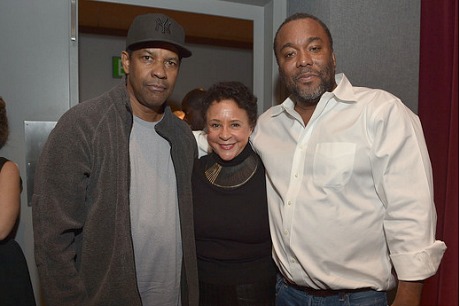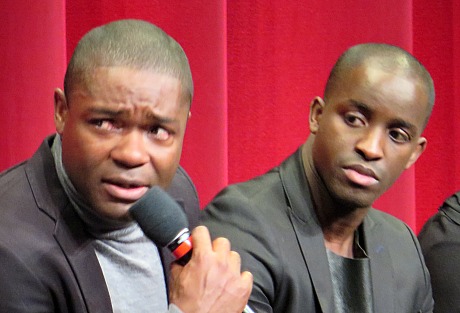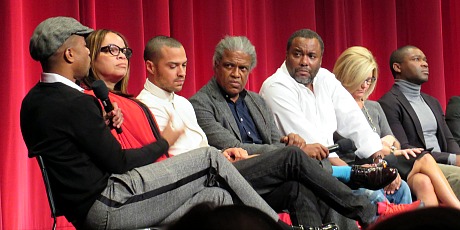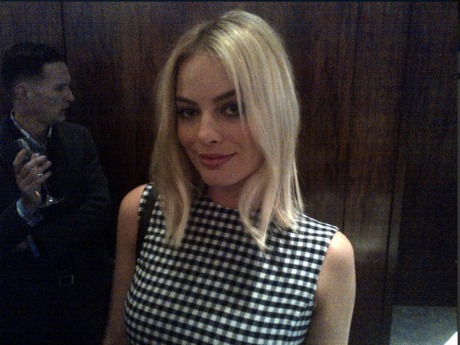Last night Denzel Washington hosted a special screening of Lee Daniels’ The Butler at the Academy theatre. I came in late and so I missed Denzel, who showed up for photos before the film began and then ducked out. Attendees included director Lee Daniels and costars Cuba Gooding Jr., Elijah Kelly, David Oyelowo and Jesse Williams, costume designer Ruth Carter, producer Pam Williams plus six of the original Freedom Riders (Dr. William Harbor, Julia Aaron Humbles, Charles Person, Hank Thomas, Robert and Helen Singleton) along with Rev. James Lawson and Charles Allen. The moderator was Elvis Mitchell. It’s no secret that The Butler has been pushing a primal emotional button for African Americans since it opened, and last night’s comments (particularly a teary confession from Oyelowo) underlined this. Here’s my original 8.9.13 review, titled “Surprise: The Butler Isn’t half Bad.”

(l.) Butler screening host Denzel Washington, (middle) Sheila Johnson, co-founder of BET, (r.) Butler director Lee Daniels.

Butler costars David Oyelowo (who broke down while discussing the gulf between performing scenes of racial animus vs. what the original Freedom Riders went through for real), Elijah Kelly during last night’s post-screening discussion.


